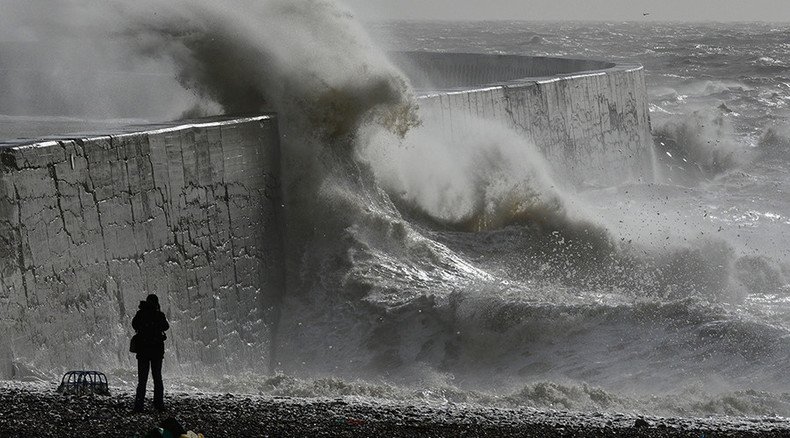Sea levels ‘locked’ into 3-foot rise by century’s end – NASA

Sea levels around the world have risen an average of 3 inches since 1992 and are now rising faster than they were 50 years ago, NASA warned. What’s worse, they are currently on track to increase 3 feet (90 cm) or more by the end of the century.
READ MORE: Road-surfing Russians ride typhoon waves with wakeboards tied to cars (VIDEOS)
The dire news comes as NASA announced an “intensive research effort” currently underway that very clearly shows a sea level rise of several feet is “unavoidable.” Scientists point to the expansion of warming oceans, melting glaciers, and shrinking polar ice sheets as reasons behind the climbing waters.
“People need to understand that the planet is not only changing, it’s changed,” NASA scientist Tom Wagner said this week to Reuters.
“If you’re going to put in major infrastructure like a water treatment plant or a power plant in a coastal zone ... we have data you can now use to estimate what the impacts are going to be in the next 100 years.”
What’s the connection between the Earth getting warmer & the sea level getting higher? We'll tell you
#EarthRightNow
https://t.co/smFj5M2diT
— NASA (@NASA) August 27, 2015Previous estimates by the UN in 2013 stated that sea levels would rise anywhere from 1 to 3 feet (30 – 90 cm) by the year 2100, but NASA scientist Steven Nerem said its most recent data shows clearly that “the higher end of that range is more likely, and the question remains how that range might have to shift upwards.”
Notably, sea levels haven’t risen at the same rate across the word. Some locations have seen the sea level rise 9 inches, NASA said, while other regions, such as the US West Coast, have actually seen sea levels go down. The West Coast drop has been attributed to “natural variation,” however, and the sea level is expected to rise sharply there over the coming decades.
A dramatic increase in sea level would pose numerous risks for tens of millions of people around the world. More than 123 million people in the US alone – about 40 percent of the population – lived in counties directly on the shorelines as of 2010, according to the National Oceanic and Atmospheric Administration. NASA has also expressed concern that global warming could wreak havoc on its space program in Florida.
Our OMG mission is mapping the seafloor around Greenland to document ice loss: http://t.co/mIKznha8hy#EarthRightNowpic.twitter.com/Sp4K1ioeHc
— NASA (@NASA) August 27, 2015As temperatures rise, more and more ice continues to melt. Recently, a single piece of ice broke away from the Jakobshavn glacier in Greenland that was so large it could bury the entire island of Manhattan under 1,000 feet of ice, CNN reported. This glacier could raise global sea levels by about 1.6 feet on its own if it were to completely melt, glaciologist Eric Rignot from the University of California in Irvine warned, according to the Washington Post.
In fact, if the entire Greenland ice sheet were to melt, sea levels would rise about 20 feet. It’s already shed 2,500 gigatons of ice since 2004. A gigaton equals approximately 1 billion metric tons.
One of the most important questions that remains unanswered is just how fast the polar ice sheets are going to melt as a result of the higher temperatures Earth is experiencing. Regardless of the pace, however, Rignot said any attempt to reverse current trends would take “centuries.”












